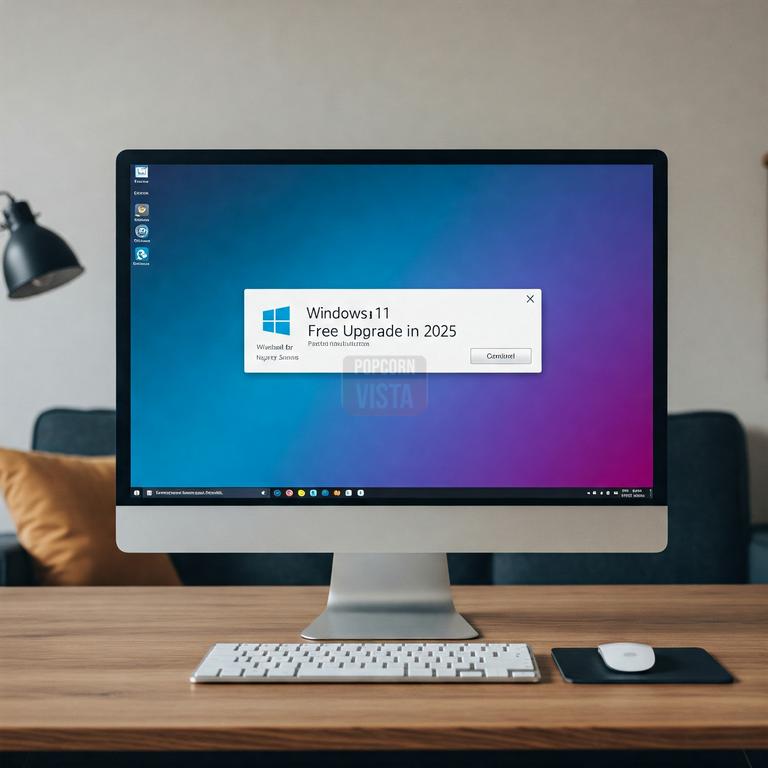As the digital world continues to evolve, Microsoft has made headlines with its latest push to transition users to Windows 11. Specifically, as of April 2025, Microsoft is offering a free upgrade to Windows 11 for eligible Windows 10 users, with a particular focus on the American market, where adoption rates have recently surpassed Windows 10. With the Windows 10 end-of-support deadline looming on October 14, 2025, this offer is a critical opportunity for millions of Americans to stay secure and access modern features. However, not all users can take advantage, and the stakes are high. In this guide, we’ll dive into the details of the offer.
Understanding Microsoft’s Free Upgrade Offer
To start, Microsoft’s free upgrade offer allows Windows 10 users with compatible hardware to transition to Windows 11 at no cost. This initiative, emphasized in recent reports, targets the estimated 500 million eligible Windows 10 users globally, with a significant focus on the U.S., where Windows 11 now holds a 54% market share compared to Windows 10’s 44% as of March 2025. The offer is part of Microsoft’s broader campaign to phase out Windows 10, which will no longer receive security updates or technical support after October 14, 2025, leaving unsupported systems vulnerable to cyber threats.
Eligibility and Hardware Requirements
Before diving in, it’s crucial to understand eligibility. To qualify for the free upgrade, your PC must meet Windows 11’s stringent hardware requirements, including:
- Trusted Platform Module (TPM) 2.0: A security chip that enhances system protection.
- Secure Boot: Enabled in the BIOS for secure startup.
- Supported Processor: Typically Intel 8th Gen or newer, AMD Ryzen 2000 or newer.
- 4GB RAM (minimum) and 64GB storage.
- Windows 10 version 2004 or later.
Unfortunately, approximately 240 million PCs worldwide, including many in the U.S., lack TPM 2.0 or other required specs, rendering them ineligible. For these users, Microsoft recommends recycling or replacing their devices, a suggestion that has sparked some controversy.
How to Upgrade
If your PC is eligible, upgrading is straightforward. Here’s how:
- Check Compatibility: Use the PC Health Check app from Microsoft to verify if your device meets Windows 11 requirements.
- Access Windows Update: Go to Settings > Update & Security > Windows Update and select Check for updates. If eligible, you’ll see an option to download and install Windows 11.
- Alternative Methods: If the update doesn’t appear, download the Windows 11 Installation Assistant or create installation media using Microsoft’s Media Creation Tool.
- Backup Files: Although files and apps typically transfer, back up data to OneDrive or an external drive to avoid potential loss.
Moreover, the upgrade process retains your files and apps by default, but you have 10 days to revert to Windows 10 if needed, provided you don’t perform a clean install.
Why the Focus on America?
Interestingly, the U.S. has become a success story for Microsoft’s upgrade campaign. According to Statcounter, Windows 11 overtook Windows 10 in the U.S. market by March 2025, jumping from 42% to 54% in a month. This shift contrasts with slower adoption in Europe (42% Windows 11) and Asia, where Windows 10 retains a stubborn majority. Consequently, Microsoft is leveraging this momentum to urge American users to upgrade before the deadline, emphasizing the security risks of remaining on an unsupported OS. Without updates, Windows 10 systems will be “easy targets” for malware and hackers, as Microsoft warns.
Benefits of Upgrading to Windows 11
So, why should Americans take the leap? Windows 11 offers several advantages:
- Enhanced Security: Features like TPM 2.0 and Secure Boot provide robust protection against modern cyber threats.
- New Features: Enjoy snap layouts, widgets, and improved multitasking for productivity.
- AI Integration: Copilot+ PCs introduce AI tools like Recall, which screenshots and indexes your activities for quick retrieval (though privacy concerns exist).
- Gaming Performance: DirectX 12 Ultimate enhances graphics for gamers.
- Continued Support: Unlike Windows 10, Windows 11 will receive regular updates, ensuring long-term reliability.
Additionally, upgrading now avoids potential costs, as Microsoft reserves the right to end the free offer, though no specific expiration date is confirmed.
Challenges and User Sentiment
Despite the benefits, the upgrade offer isn’t without challenges. For instance, the 240 million ineligible PCs pose a significant hurdle. Microsoft’s advice to “recycle or landfill” these devices has drawn criticism for its environmental and financial implications. Alternatively, users can pay $30 for a 12-month Windows 10 support extension, but this is a temporary fix.
User Feedback
On the sentiment front, reactions are mixed:
- Positive: Many Americans appreciate the free upgrade and improved security. One X post celebrated the milestone, noting, “Microsoft’s winning the upgrade race in the U.S.!”
- Frustration: Users with incompatible hardware feel pressured to buy new PCs, with some calling the TPM 2.0 requirement “arbitrary.”
- Privacy Concerns: The Recall feature, which screenshots user activity every three seconds, has raised alarms among privacy advocates, particularly for risks in sensitive settings.
- Confusion: A now-deleted Microsoft blog post titled “Free Upgrade to Windows 11 (For a Limited Time Only)” sparked fears that the offer might expire, though Microsoft clarified this was inaccurate.
Overall, while the U.S. is embracing Windows 11 faster than other regions, the ineligible PC issue and privacy debates remain sticking points.
What’s Next for Windows Users?
Looking ahead, the clock is ticking for Windows 10 users. Here’s what to expect:
- October 14, 2025 Deadline: After this date, Windows 10 will cease receiving free updates, increasing security risks.
- Potential Offer Expiration: Although Microsoft retracted claims of a time limit, the company’s FAQ notes it “reserves the right to end support for the free offer,” suggesting users shouldn’t delay.
- Workarounds Blocked: Microsoft is cracking down on tools like Flyby11 that bypass hardware restrictions, flagging them as potential malware.
- Windows 12 Rumors: Early speculation points to a Windows 12 release in 2026, potentially with even stricter AI-focused hardware requirements.
- Global Push: Microsoft aims to replicate U.S. success in Europe and Asia, where Windows 10 still dominates.
For ineligible users, options include purchasing a new PC (Microsoft pushes Copilot+ PCs for AI capabilities) or exploring the $30 support extension, though this only delays the inevitable.
Tips for a Smooth Transition
To ensure a successful upgrade, consider these tips:
- Verify Compatibility Early: Run the PC Health Check app to avoid surprises.
- Update Windows 10: Ensure you’re on version 2004 or later for a seamless upgrade.
- Backup Data: Save files to OneDrive or external storage before upgrading.
- Monitor Updates: Check for post-upgrade patches, as recent Windows 11 updates have caused issues with audio drivers and accessories.
- Act Promptly: Upgrade before October 2025 to avoid potential offer expiration or security risks.
By following these steps, you can maximize the benefits of Windows 11 while minimizing disruptions.
Conclusion
In summary, Microsoft’s free Windows 11 upgrade offer is a pivotal opportunity for Americans, especially as Windows 11 overtakes Windows 10 in the U.S. market. With enhanced security, modern features, and ongoing support, upgrading is a smart move for eligible users. However, the 240 million ineligible PCs and privacy concerns around features like Recall highlight the challenges ahead. As the October 14, 2025, deadline approaches, now is the time to act—check your PC’s compatibility, back up your data, and upgrade to stay secure. For those with incompatible hardware, weigh the costs of a new PC or temporary support extension. Ultimately, Microsoft’s push reflects a broader shift toward a secure, AI-driven future, and Americans are at the forefront of this transition.

